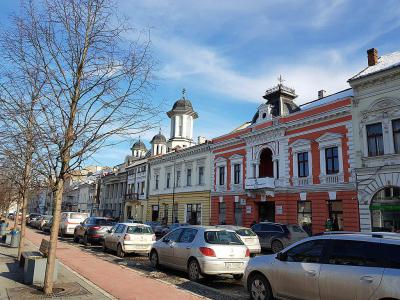
Bulevardul Eroilor (Heroes' Avenue), Cluj-Napoca (must see)
Heroes' Avenue holds a special place in the hearts of locals and visitors alike. It serves as a vital conduit between squares, doubling as a recreational space for residents to unwind with friends or enjoy a leisurely stroll.
Originally known as Middle Street, the boulevard underwent several name changes over the years. At the close of the nineteenth century, it was dedicated to Ferenc Deák, a revered Hungarian politician known as "the wise man of the fatherland." Subsequently, it was named after Queen Maria, and later, in the 1950s, it bore the name of the Soviet Foreign Minister, Vyacheslav Molotov, following the Second World War. During the era of Romanian Prime Minister Dr. Petru Groza, the boulevard carried his name. However, in 1990, it was renamed in honor of the heroes and martyrs of the revolution who bravely assembled on December 21, 1989, demanding the overthrow of the communist regime.
Heroes' Avenue thrives as a bustling commercial artery, complemented by an array of dining and entertainment establishments. Its historic landmarks, such as the Lupa Carolina Statue near the Greek-Catholic Cathedral "Transfiguration" and the Monument of the Memorandists at the entrance from Unirii Square, offer glimpses into Cluj's rich heritage.
Originally known as Middle Street, the boulevard underwent several name changes over the years. At the close of the nineteenth century, it was dedicated to Ferenc Deák, a revered Hungarian politician known as "the wise man of the fatherland." Subsequently, it was named after Queen Maria, and later, in the 1950s, it bore the name of the Soviet Foreign Minister, Vyacheslav Molotov, following the Second World War. During the era of Romanian Prime Minister Dr. Petru Groza, the boulevard carried his name. However, in 1990, it was renamed in honor of the heroes and martyrs of the revolution who bravely assembled on December 21, 1989, demanding the overthrow of the communist regime.
Heroes' Avenue thrives as a bustling commercial artery, complemented by an array of dining and entertainment establishments. Its historic landmarks, such as the Lupa Carolina Statue near the Greek-Catholic Cathedral "Transfiguration" and the Monument of the Memorandists at the entrance from Unirii Square, offer glimpses into Cluj's rich heritage.
Want to visit this sight? Check out these Self-Guided Walking Tours in Cluj-Napoca. Alternatively, you can download the mobile app "GPSmyCity: Walks in 1K+ Cities" from Apple App Store or Google Play Store. The app turns your mobile device to a personal tour guide and it works offline, so no data plan is needed when traveling abroad.
Bulevardul Eroilor (Heroes' Avenue) on Map
Sight Name: Bulevardul Eroilor (Heroes' Avenue)
Sight Location: Cluj-Napoca, Romania (See walking tours in Cluj-Napoca)
Sight Type: Attraction/Landmark
Guide(s) Containing This Sight:
Sight Location: Cluj-Napoca, Romania (See walking tours in Cluj-Napoca)
Sight Type: Attraction/Landmark
Guide(s) Containing This Sight:
Walking Tours in Cluj-Napoca, Romania
Create Your Own Walk in Cluj-Napoca
Creating your own self-guided walk in Cluj-Napoca is easy and fun. Choose the city attractions that you want to see and a walk route map will be created just for you. You can even set your hotel as the start point of the walk.
Cluj-Napoca Introduction Walking Tour
The unofficial capital of Romania's Transylvania region, Cluj-Napoca (or just Cluj) is the city of universities, bustling nightlife, and historical sights, thanks to the legacy of Saxon and Hungarian rule. For its historical wealth, Cluj has been rightfully nicknamed a "treasure city".
Its official name has intriguing origins: "Cluj" is derived from the Latin... view more
Tour Duration: 2 Hour(s)
Travel Distance: 2.1 Km or 1.3 Miles
Its official name has intriguing origins: "Cluj" is derived from the Latin... view more
Tour Duration: 2 Hour(s)
Travel Distance: 2.1 Km or 1.3 Miles

